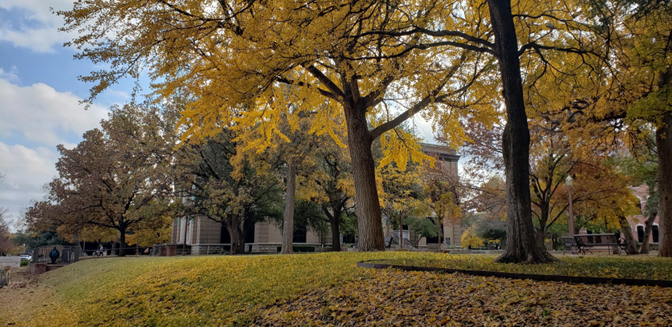
By Jeff Floyd
Certified horticulturist and arborist
April is prime viewing time for the explosion of Texas wildflowers. However, there is another, often overlooked, time to enjoy a visual excursion through Texas for nature’s splendor in colorful repose. What causes tree leaves to change color beginning in October, often enduring through November?
To make chlorophyll, the pigments responsible for the green color of leaves, trees require long hours of full sunlight. Without this green pigment, they wouldn’t be able to produce the food they need to survive. It is constantly being made and broken down. As nighttime becomes longer in the fall, fewer chlorophyll molecules are produced in leaves.
Camouflaged beneath the green of chlorophyll are several other colorful compounds. The violet, blue and red shades seen in autumn are from a family of pigments called anthocyanins (an-thō-Sī-an-nins). Another group of pigments masked by chlorophyll is known as carotenoids. These yellow, orange and brown hues make up the predominant fall colors of Texas trees.

Research has demonstrated that anthocyanins help rid the body of the highly reactive free radicals associated with aging, cancer, and arteriosclerosis. Think red wine, purple tortilla chips, and blueberry smoothies. The pigments in these products are part of the reason for their purported health benefits.
Carotenoids also boast antioxidant properties in addition to their ability to be converted into vitamin A during digestion. As any child can attest, the orange carotenoid in carrots is great for eyesight. If you don’t believe them, just ask Bugs Bunny!
Now don’t rush out to the front yard and make a meal of the leaves falling onto your front lawn. Rather let your eyes feast on the pallet of available colors our great Texas trees provide. Drive five hours west to the hill country and search for the Sunbright yellows of ginkgos and cedar elms or the flaming reds of Shumard oak. Take a trip West to the Guadalupe Mountains for the show that bigtooth maples and Texas madrones put on. New England eat your heart out!
Better yet, enjoy a staycation and search for the candy-orange foliage of a neighboring Bradford pear or the leaves of Texas red oak which sometimes approach tones of mauve or nearly purple. Thank goodness for the shorter days and cooler weather that reduces the concentration of chlorophyll in leaves, allowing trees to slowly go into a period of rest, and bring a color wheel within sight of our own doorstep.



